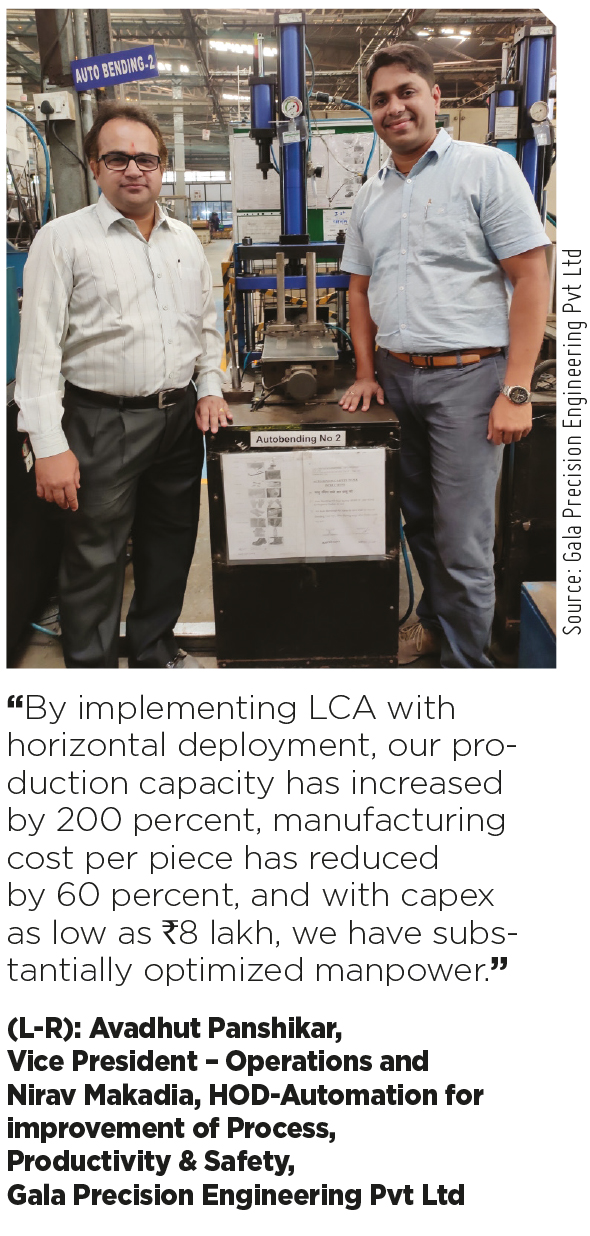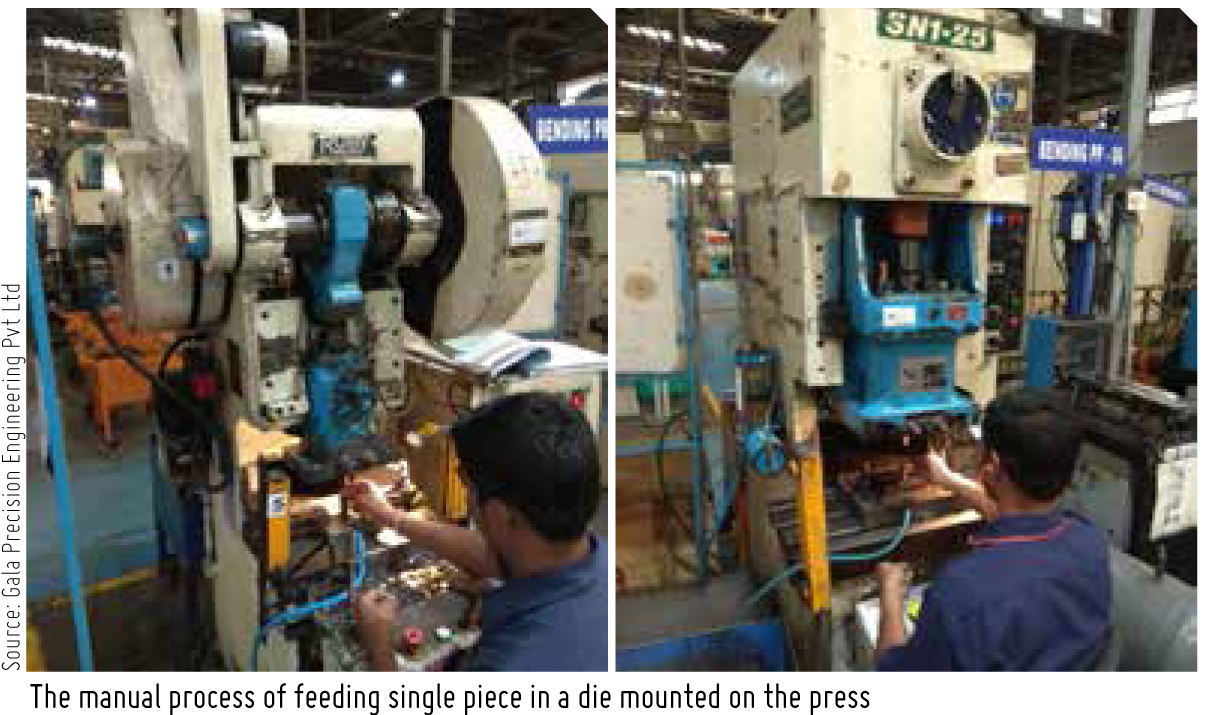Springing to Success
Imbued with entrepreneurial passion, Gala Precision Engineering’s young team has reached heights, serving global markets with its high-end technology solutions in the fields of surface engineering and high-performance springs. Here’s knowing its present stature, the various odds the SME faced in the way towards adopting the requisite automation and how they were overcome…
Thanks to its well-structured and validated business model, Gala Precision Engineering Pvt Ltd today is well-positioned to provide its customers with technology-driven, value-added solutions, leveraging a broad product portfolio on the one hand, and enhancing the entire value-chain quality, delivery, and services on the other.
With the business diverged into two streams - Surface Engineering Solutions and Springs Technology - the company currently exports to over 25 countries including Germany, Switzerland, Finland, Italy, the US, Singapore, Taiwan, and China. With over 300 global customers, the company generates 60 percent of its revenue solely from exports.
 Surface Engineering Solutions
Surface Engineering Solutions
Gala is a one-stop solution provider for surface finishing needs of deburring, finishing, washing and cleaning. “We have more than 25 years’ experience of building standard and customized machines. We offer complete solutions of machines and processing media and compounds for surface finishing and parts cleaning needs. We have the capability to build large finishing and cleaning equipment for challenging needs of defence, atomic and aerospace sectors,” shares Avadhut Panshikar, Vice President – Operations, Gala Precision Engineering.
The company’s finishing machines are capable of achieving Ra value of 0.05 micron and precision parts cleaning machines of achieving millipore value of less than 1 mg.
Springs Technology
Three decades of experience, and a consistent effort of remaining updated with the latest technologies in the field and incorporating them in the design and manufacture of high-performance Disc springs and Strip springs have helped Gala scale up its business to become Asia’s largest manufacturer of Disc springs.
“High quality, reliability and design collaboration are the key factors for us to become preferred partner of our global customers. We, today, serve global OEMs in Power Equipment, Oil & Gas Equipment, Wind Turbines, and Automotive industries,” informs Panshikar.
In the project of 'Disc Spring Bending', the reasons to replace the existing manual proesses with Low Cost Automation (LCA)as to achieve increased output, increase safety and reduce accidents, optimize manpower, reduce outsourcing and dependency on the vendors, and optimize line balancing.
Towards Automation
In 2016, the management of Gala set a business target of `150 crore by 2021. “This was the major drive for us towards adopting automation in our processes to achieve increased output and remain competitive in the current market,” he explains.
For the manufacturing of Disc Springs, processes such as Blanking, OD / ID turning, Deburring, Bending, Heat treatment, Descaling, Scragging, Height checking, Phosphating / Shot pinning, Visual inspection etc. are to be followed. “Before we start these processes, we first need to evaluate them in terms of manpower usage, critical operational parameters, line balancing etc.”

In the project of ‘Disc Spring Bending’, the reasons to replace the existing manual processes with Low Cost Automation (LCA) was to achieve increased output, increase safety and reduce accidents, optimize manpower, reduce outsourcing and dependency on the vendors, and optimize line balancing.
“To achieve a conical shape, we would manually feed single pieces in the bending die mounted on a conventional press. The operator would give stroke command to the press by pressing the hand switch,” shares Panshikar.
The feeding process was laborious and productivity varied from person to person. Also, there were instances, where the operator met with accidents. To overcome these issues, the organization started looking for a sustainable solution to improve productivity, safety and consistency of the operation.
Necessity, Mother of Innovation
As the bending process is highly critical and outsourcing rids one of any control on the process at the vendor’s end, the team started working towards finding a solution to reduce the problems faced by the organization.
“To begin with, we applied the Pareto principle to analyze the current data and based on that, we finalized a few sizes of the components whose volumes were high and orders consistent,” he informs.
The team then consulted some external experts but the speed, accuracy and capex were not feasible as per the company’s requirements so the same process was decided to be executed in-house with the Automation team.

Implementation
After concept finalization and technology selection, the team presented the concept to the top management. “Our management had already set the guideline that we could invest 2 lakh on automation if we saved on one human resource. As per our calculation, the overall capex was far less than 2 lakh, so we got the go ahead on the same,” reveals Panshikar.
“The internal design team was used for designing of mechanical drawings and outside vendors were hired for the manufacturing. The complete machine was, later, assembled at our plant. Electrical panels and PLC programs were also designed in-house,” he adds.
The company’s first machine was developed within three months, after which the trial showed the following challenges:
- Feeding single component from the stack required a highly precise fork with greater life and no warpage, with the thickness lesser than the component’s thickness to take one component out at a time.
- The feeding of a component in the die had to be precise to ensure proper positioning, else warpage occurred on the component.
- Accurate sensing of the component to give the feedback to the press for the stroke.
- Manufacturing of the different sets of bending dies for the SPM.
 The team overcame all the challenges and finally handed over the first machine to the company’s production team after one month’s trial on the shop floor with proper training and supervision.
The team overcame all the challenges and finally handed over the first machine to the company’s production team after one month’s trial on the shop floor with proper training and supervision.
Horizontal Deployment
The company then went for horizontal deployment and within one year’s span, implemented a total of 4 SPMs for lower thickness Disc Springs and 2 Servo feeders on the press for higher thickness Disc Springs which require larger bending load.
“Hence, by implementing LCA with horizontal deployment, today we do 39 varieties of bending, amounting to production of 216 lakh disc springs per year. Our production capacity has increased by 200 percent, manufacturing cost per piece has reduced by 60 percent, and with capex as low as `8 lakh, we have substantially optimized our manpower,” concludes Panshikar.
The internal design team was used for designing of mechanical drawings and outside vendors were hired for the manufacturing. The complete machine was, later, assembled at the company’s plant.




 Facebook
Facebook.png) Twitter
Twitter Linkedin
Linkedin Subscribe
Subscribe